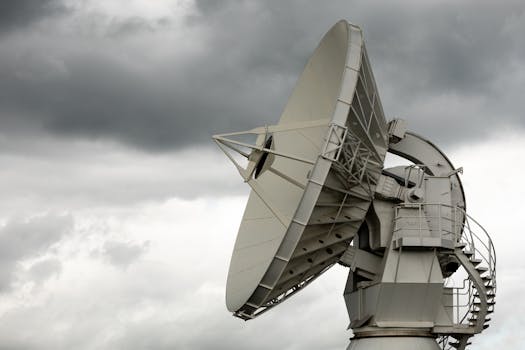GEO Satellites: Understanding the Technology and Applications of Geostationary Satellites
GEO satellites, or geostationary satellites, are a type of satellite that orbits the Earth at an altitude of approximately 36,000 kilometers, remaining stationary relative to a fixed point on the equator. This unique characteristic allows GEO satellites to provide continuous coverage of a specific region, making them ideal for various applications such as telecommunications, navigation, and weather forecasting. The focus keyword for this article is GEO satellites, and we will explore the technology and applications of these satellites in detail.
The concept of GEO satellites was first proposed by scientist Arthur C. Clarke in 1945, and the first geostationary satellite, Syncom 2, was launched in 1963. Since then, the technology has evolved significantly, with modern GEO satellites equipped with advanced transponders, antennas, and propulsion systems. These satellites are typically launched into geostationary orbit using powerful launch vehicles, such as the Ariane 5 or the Atlas V.
Technology and Design of GEO Satellites
GEO satellites are designed to operate in the harsh environment of space, with temperatures ranging from -170°C to 120°C. They are typically equipped with solar panels, which provide the necessary power for the satellite’s systems, as well as batteries to store energy during periods of eclipse. The satellite’s payload, which includes the transponders, antennas, and other equipment, is designed to withstand the extreme conditions of space and provide reliable service for many years.
The design of GEO satellites involves a range of complex factors, including the satellite’s mass, size, and shape, as well as the materials used in its construction. The satellite’s propulsion system, which includes thrusters and fuel, must be carefully designed to ensure that the satellite can maintain its position in orbit and perform any necessary maneuvers. The satellite’s communication systems, including the transponders and antennas, must also be carefully designed to provide reliable and high-quality communication services.
Applications of GEO Satellites
GEO satellites have a wide range of applications, including telecommunications, navigation, weather forecasting, and Earth observation. In telecommunications, GEO satellites are used to provide broadband internet, television broadcasting, and mobile communications. They are also used in navigation, providing location information and timing signals for GPS and other navigation systems.
In weather forecasting, GEO satellites are used to monitor weather patterns and provide early warnings of severe weather events. They are also used in Earth observation, providing images of the Earth’s surface and monitoring environmental changes such as deforestation and climate change. Additionally, GEO satellites are used in scientific research, providing valuable data on the Earth’s atmosphere, oceans, and land surfaces.
Future Developments and Challenges
The future of GEO satellites is likely to be shaped by advances in technology and changing user requirements. One of the major challenges facing the satellite industry is the increasing demand for broadband internet and other high-bandwidth services. To meet this demand, satellite operators are developing new technologies such as high-throughput satellites (HTS) and very high-throughput satellites (VHTS), which offer faster data rates and greater capacity.
Another challenge facing the satellite industry is the growing problem of space debris. As the number of satellites in orbit increases, so does the risk of collisions and other accidents. To mitigate this risk, satellite operators and regulators are developing new guidelines and regulations for the responsible use of space.

